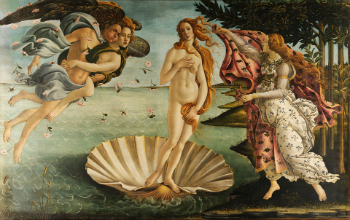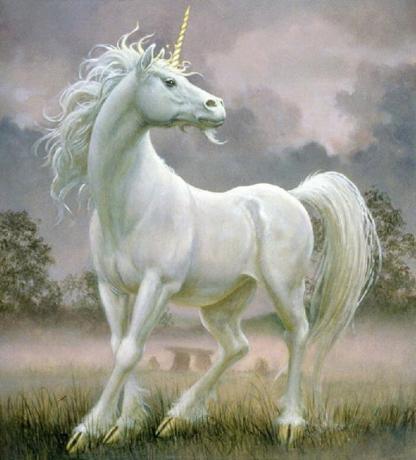Ragnarok, translated from Old Norse, means "consummation of the destinies of the supreme powers" and makes mention of the supposed beliefs of the peoples vikings in the events that would lead to the end of the universe and the destruction of its gods|1|. In this Nordic belief, a succession of catastrophic events would bring about the destruction of the universe and the emergence from another universe, which would be repopulated by a couple of surviving humans and ruled by reborn gods.
You vikings they were peoples who inhabited the Northern Europe, specifically in the region of Scandinavia and that, from the Viking era (from 793 to 1066), began the period of navigations that led them to settle in other regions, such as the British Isles, Iceland, north of france and even in the North America.
What is Ragnarök?
Ragnarök is the term used to refer to the succession of catastrophic events that are part of eschatology (theory about the end of the world) of the Old Norse, that is, they were how the Vikings supposedly believed the universe would have its end. During Ragnarök, according to this view, great battles would take place between the gods and the destruction of the universe would be led by
Loki, by the sons of Loki and by the fire giant called Surtur.Ragnarök's events would be preceded by the fimbulvetr, a long cycle of three winters in a row in which there would be terrible frosts, and in which violence and chaos would spread across the world. In this cycle of three consecutive winters, according to the Nordic record narrated in Voluspa (The Seer's Prophecy):
brothers will fight
And they will kill one another;
sons of the sisters themselves
will sin together
Sick days among men,
In what sins of sex will increase.
One age of the ax, one age of the sword,
Shields will be broken.
An age of the wind, an age of the wolf,
before the world drops dead|2|.
During the chaos of Ragnarök, the sun and moon, eternally chased by the wolves skoll and hati, would be reached and devoured by another wolf called managam. After that, Loki's children would march over Midgard (world of men) and would do battle with the gods. Loki's children were the wolf Fenrir, the snake of the world called Jörmungandr, and the goddess of the underworld Hel. All were sons of Loki with a giantess (Jotun, in Norse) named Angrboda.
Also, Loki, sailing on Naglfar, the ship made from the remains of the dead's nails, together with Hymir, the leader of the ice giants army, would be directed to the battle site. Finally, Surtur, leading the fire giants, would destroy Bifrost, the bridge linking Midgard to Asgard, and then they would all be reunited on Vigrídr, the great plain where the final battle would take place.
When these events took place, Heimdall, the guardian of Bifrost and Asgard, would sound his trumpet, and the Norse gods would join their armies to fight the battle. The army that would fight Loki's forces would be formed by the set of Norse gods, together with the Valkyries and of the Einherjar (warriors chosen by Odin).
The outcome of this decisive battle was narrated by Snorri Sturluson in the record known as Gylfaginning (The Hallucinations of Gylfi):
Odin will lead riding in his golden helmet and fine mail coat against the Wolf Fenrir, and Thor will fight forward, beside him, but it cannot be of any help to him, as he will have his hands full fighting the Serpent of Midgard. Freyr will face Surtr and there will be a tough battle between them before Freyr falls, the cause of his death is that he doesn't have that good sword he gave Skirnir. Then the dog Garmr will be released, which is trapped in Gnipa's cave; he is the greatest monster, he will battle with Týr, and each will become the murderer of the other. Thor will kill the Serpent of Midgard, and after taking nine steps from that location, he will then drop dead to the ground, due to the venom that the snake gushed on him. The Wolf will swallow Odin, that will be his end. But shortly thereafter, Vidarr will go forward and place one foot on Lobo's lower jaw; […]. With one hand he will grab the Wolf's upper jaw. Loki will battle Heimdallr, and each will be the killer of the other. Then Surtr will set fire to the earth and burn the whole world […]|3|.
After the destruction of the universe during the events of Ragnarök, a fertile land would rise from the sea and be repopulated by a couple of humans who had survived, Lif and Lifthrasir. to live and Vali, two sons of Odin, would also survive Ragnarök, as would mod and Magni, sons of Thor. Lastly, bucket and Hödr they would rise from the underworld. According to Sturluson's account, things would happen as follows:
Do not stop now... There's more after the advertising ;)
At that time, the land will emerge from the sea, green and beautiful, then its fruits will emerge from the unseeded land. Vidarr and Vali will be alive, since neither the sea nor the fire of Surtr will have harmed them; and they will dwell on the Plains of Ida, where Asgard was before. And then Thor's sons, Modi and Magni, will go there and they will have Mjölnir with them. Then Baldr will go there and, Hödr, coming from Hel, then everyone will sit together and talk to each other […].
In the place called Hoddmímir's Wood, two of the human race hid during the Fire of Surtr, who are called thus: Líf and Lifthrasir, and for food they will have the morning dew. From them will come a descendant so numerous that the whole world will be populated […]|4|.
What are the Nordic sources that record Ragnarök?
Historians know the events that characterize the Ragnarök thanks to the records that were made in the Edda in Prose (particularly in the chapter called Gylfaginning) and in various poems in the Poetic Edda, especially the poem Völuspá. These are the main records that are known about the myths that characterized the religion of the Nordics.
Edda in Prose was written by the Icelandic poet and historian Snorri Sturluson, around 1220. According to Johnni Langer, this work was intended to “be a mythology manual for young people poets, at a time when the old poetic metaphors and mythical narratives were being forgotten"|5|. The main chapter of this work, as mentioned, is called Gylfaginning and systematized the Norse beliefs and myths in a linear fashion, from the creation of the universe to the catastrophe of the Ragnarok.
The Edda Poética is a collection of Nordic poems that narrate different myths that were part of the religious belief of the Vikings. These poems were recorded in a manuscript known as the Codex Regius, which included 29 poetic texts. A copy was located in 1643 on a farm in Iceland. In the Edda Poética, the poem that addresses the events of Ragnarök in the most extensive way is the Völuspá.
About Ragnarök, there are historians who believe that this event did not originally exist in the Norse religious conception and was introduced by Christian interference.. These historians argue that the representation of Ragnarök was inspired by the events narrated in the apocalypse. Many of these specialists use an excerpt from Völuspá as an example of the Christian influence in the design of Ragnarök:
So from above,
come to judge
The strong and powerful,
that everything rules|6|.
In the case of the excerpt above, historians claim that the mention of the “strong and powerful” that comes “from above” is a direct mention of the christian god. There are, however, specialists who dispute this view and claim that the events of Ragnarök have a totally pagan origin and originate from the typical religious narrative of the Indo-European peoples.
Historian Johnni Langer claims that the Norse eschatological narrative is related to the fear that has spread in the region. because of a series of astronomical phenomena, such as eclipses and comet passages, which occurred between the 8th and 9th centuries.|7|. Langer also explains that the passage of Halley's comet in 837, for example, it may have been misinterpreted by the Norsemen, who linked it to Jörmungandr, the serpent of the world.
|1| LANGER, Johnni. Ragnarok. In.: LANGER, Johnni (ed.). Nordic Mythology Dictionary: Symbols, Myths and Rites. São Paulo: Hedra, 2015, p. 391.
|2| STURLUSON, Snorri. Edda in Prose: Gylfaginning and Skáldskaparmál. Belo Horizonte: Barbudânia, 2015, p. 118.
|3| Idem, p. 119.
|4| Idem, p.125-126.
|5| LANGER, Johnni. Edda in Prose. In.: LANGER, Johnni (ed.). Nordic Mythology Dictionary: Symbols, Myths and Rites. São Paulo: Hedra, 2015, p. 143.
|6| ANONYMOUS. Edda Mayor, translated by Luis Lerate. Madrid: Alianza Editorial, 1986, p.36. [In Spanish, my translation].
|7| For more details on, access the article “Comets, Eclipses and Ragnarök: An Astronomical Interpretation of Pre-Christian Norse Eschatology” by Johnni Langer, by clicking on here.
By Daniel Neves
Graduated in History



